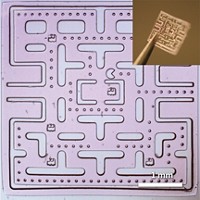Advertisement
Grab your lab coat. Let's get started
Welcome!
Welcome!
Create an account below to get 6 C&EN articles per month, receive newsletters and more - all free.
It seems this is your first time logging in online. Please enter the following information to continue.
As an ACS member you automatically get access to this site. All we need is few more details to create your reading experience.
Not you? Sign in with a different account.
Not you? Sign in with a different account.
ERROR 1
ERROR 1
ERROR 2
ERROR 2
ERROR 2
ERROR 2
ERROR 2
Password and Confirm password must match.
If you have an ACS member number, please enter it here so we can link this account to your membership. (optional)
ERROR 2
ACS values your privacy. By submitting your information, you are gaining access to C&EN and subscribing to our weekly newsletter. We use the information you provide to make your reading experience better, and we will never sell your data to third party members.
Materials
A Tunnel Into Cells
Alumina nanotubes allow molecules to sneak through cell membranes
by Journal News and Community
January 2, 2012
| A version of this story appeared in
Volume 90, Issue 1
Nanometer-wide alumina tubes can puncture a cell’s membrane and create a lasting pipeline straight into its cytoplasm (Nano Lett., DOI: 10.1021/nl204051v). Researchers hope these “nanostraws” will allow scientists to deliver genetic material, such as small interfering RNAs, into cells. Nicholas A. Melosh of Stanford University and his team fabricated a mat of 1- to 2-µm-tall nanostraws by depositing layers of alumina inside the pores of a polycarbonate membrane and then etching away most of the polycarbonate (SEM image shown). The researchers then suspended the nanostraw mat over a fluidic chamber, with nanostraws pointing up, and spread cells on top of it. They reasoned that molecules in the solution filling the lower chamber would diffuse into the nanostraws and eventually into any cells punctured by the tubes. When the team tested the nanostraws, they found that the tubes’ transport efficiency depended on the size of the cargo. Small ions made it into about 70% of cells. Fluorescent-dye molecules reached about 40%. DNA plasmids were the least successful, at 10 to 15%.





Join the conversation
Contact the reporter
Submit a Letter to the Editor for publication
Engage with us on Twitter